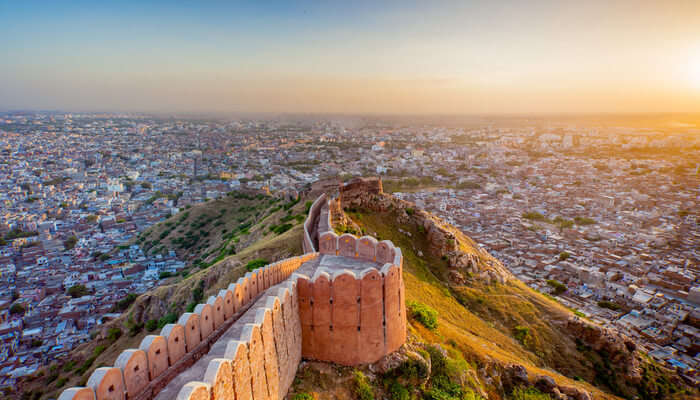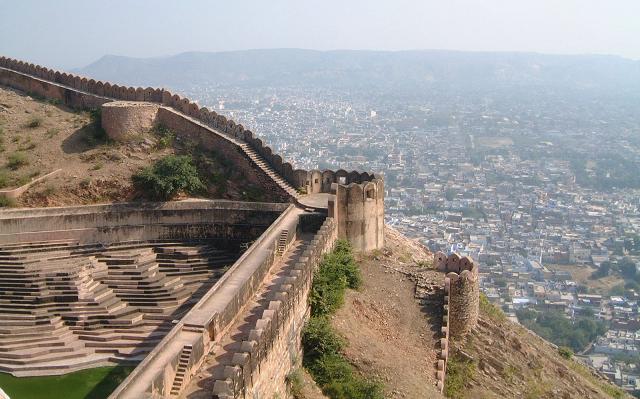
Without time in Jaipur, no journey to India is complete. Jaipur is a regal wonderland of culture and legacy, teeming with architectural jewels, and is affectionately known as “The Pink City” because of the blushing color of its historical structures. On India’s well-known Golden Triangle tourist circuit, it is also an important stop.
The Fairmont Jaipur is an opulent living palace that is worth experiencing. You may experience the opulent lifestyle enjoyed by the Jaipur royal family at City Palace. The Jantar Mantar observatory’s astronomy equipment is right next door, bringing the wonders of space to Earth. And depending on when you go, you could be able to attend one of the numerous festivals that Jaipur hosts every year, including the International Kite Festival in January or Elephant Festival in early spring.
City Palace
Shortly after Maharaja Sawai Jai Singh II decided to move his court from the city of Amber, City Palace has stood at the center of the Old City of Jaipur for three centuries. The fairy-tale-like building, which is guarded by enormous guard walls and is still the residence of Jaipur’s contemporary royal family, is lavish and more magical than you might expect. City Palace is more than just a sand-colored royal residence; it is a vast complex of structures centered on several beautifully designed garden courtyards with views of Lake Palace and Jaipur. Rajasthani and Mughal architecture are magnificently shown throughout the entire site.
Jantar Mantar
Jantar Mantar can initially appear to be nothing more than a collection of enormous abstract sculptures. However, this is not an art gallery; rather, it is a unique collection of astronomy instruments that Rajput monarch Jai Singh II began about 300 years ago to measure the heavens. The roughly 20 structures of the UNESCO World Heritage Site each have a unique function. Samrat Yantra, the observatory’s enormous sundial, is particularly impressive. Its enormous shadow, which is formed by its 27-meter height, can precisely measure time to the nearest two seconds.
ChokhiDhani
The luxurious heritage resort ChokhiDhani is closely associated with Rajasthani village culture. It is situated on Tonk Road, a little outside the city. With its historical artifacts, handmade items, paintings, folklore, and sculptures, it provides a true representation of traditional Rajasthan. Numerous entertainment alternatives are available in the town, including folk dancing, music, camel rides, puppet shows, fortune tellers, acrobatics, predicting parrots, magic performances, horseback riding, etc. It is renowned for its authentic Rajasthani cuisine as well.
Overview of Hawa Mahal, Jaipur
Built-in 1799 by Maharaja Sawai Pratap Singh, the enormous Hawa Mahal is located at the intersection of the main road in Jaipur, Badi Chaupad. The Hawa Mahal got its name from its unusual design, which is a network of tiny windows that let cool air inside the palace and kept it cool throughout the hot summer months. The palace was built primarily to enable the women of the royal family to participate in public celebrations while remaining hidden from view by local custom. It runs to the “zenana” and is situated just on the edge of the Jaipur City Palace.
Nahargarh Fort in Jaipur

Nahargarh Fort, which is outside of Jaipur, is renowned for its expansive wall that links it to Jaigarh Fort and its stunning views of the city. The Nahargarh Fort, which is adorned with exquisite carvings and stonework, is an impregnable building that, along with its two neighboring forts, Amer and Jaigarh, originally served as the main defense of Jaipur city. Maharaja Sawai Jai Singh II erected the Fort in the year 1734 as a refuge. If you’re close to Nahargarh Fort, from which you’re guaranteed to enjoy a sweeping view of the city of Jaipur, The Padao Restaurant is also a must-visit.
Birla Temple in Jipur
One of the many Birla temples spread out across the nation is the majestic Birla Mandir in Jaipur, which is a Hindu temple. The shrine, also called the Lakshmi Narayan Temple, is located on Moti Dungari Hill. The Birlas constructed the temple in 1988 after the Maharaja of Jaipur donated the site for a nominal fee of one rupee. The Birla Temple’s structure, which is made entirely of white marble, combines elements of traditional Hindu architecture with contemporary flair. The temple’s walls are decorated with deftly carved images of Gods and Goddesses and proverbs from the Puranas and Upanishads.
Jaigarh Fort in Jaipur
The magnificent Jaigarh Fort is located in Jaipur’s Pink City, sitting atop the “Cheel ka Teela” hills. To defend Amer Fort, Sawai Jai Singh II ordered the construction of this spectacular structure. It is a luxurious building perched on the cliff’s edge, surrounded by lush vegetation and imposing battlements. This majestic fort, which is known as the “Fort of Victory” because it was never conquered, is connected to Amer Fort through underground corridors. The fort gives a stunning perspective of the city of Jaipur and is currently home to the largest cannon on wheels in the world, known as “Jaivana.”
Galtaji Temple
Galtaji Temple is a prehistoric Hindu pilgrimage site that is situated on the outskirts of the imperial city of Jaipur. It has numerous shrines, holy kinds, pavilions, and natural springs, and is surrounded by the stunning Aravalli hills. This magnificent temple is located in the center of a hilly region that is bordered by a lovely canyon that draws visitors here each year. Galtaji Temple is a large temple complex with a variety of shrines that were constructed utilizing pink-colored sandstone. This shrine, which is housed inside the City Palace, is worth visiting because of the exquisite carvings and paintings that grace its walls. The Galtaji temple was built like a palace and has a distinctive architectural style.
Conclusion
The Fairmont Jaipur is an opulent living palace that is worth experiencing. This palace artfully blends the glories of the past with contemporary comforts. It glitters beneath the watchful gaze of the Aravalli hills, away from the hustle and bustle of Jaipur city, and glittering with the history and culture of Rajasthan. The Fairmont Jaipur’s 245 guest rooms, including 7 imperial suites, are custom homes that reflect classic heritage characteristics. The grand Darwazas from the Jaisalmer fort stand to watch over the Fairmont Jaipur’s special 90,000-square-foot convention center. Therefore, if you want to discover and soak up the best of Rajasthani culture, visit Fairmont Jaipur.
